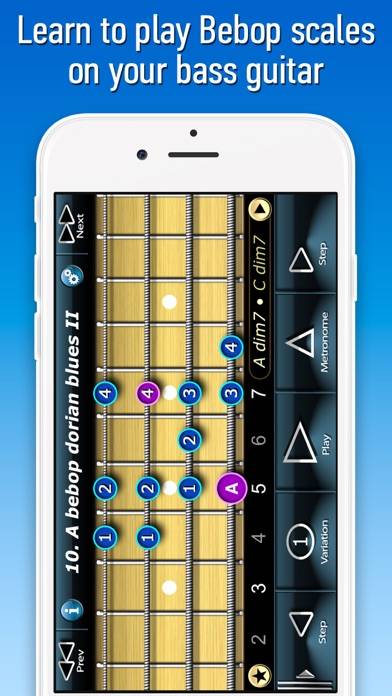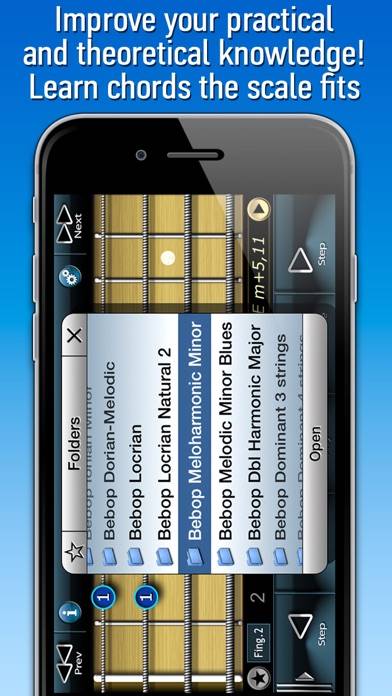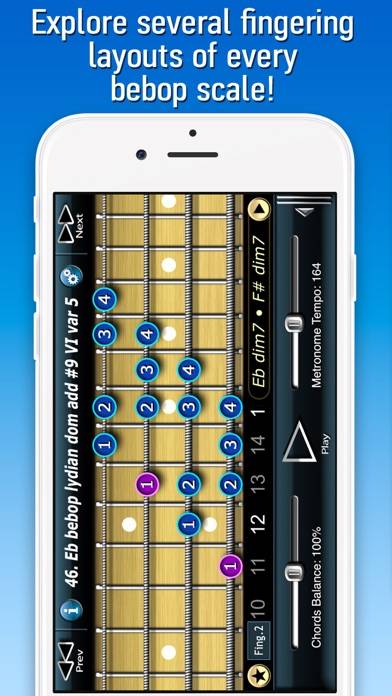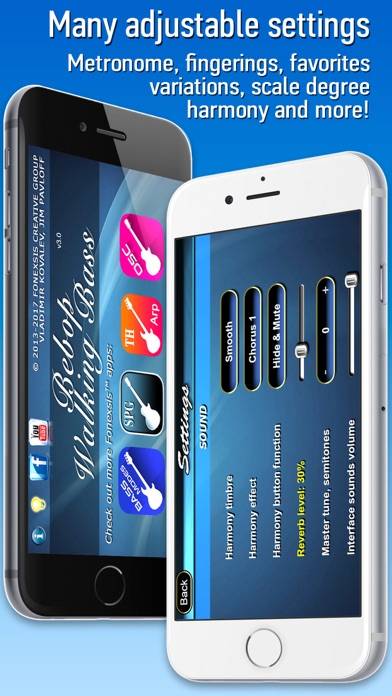How to Delete Bebop Walking Bass
Published by: FonexsisRelease Date: October 27, 2017
Need to cancel your Bebop Walking Bass subscription or delete the app? This guide provides step-by-step instructions for iPhones, Android devices, PCs (Windows/Mac), and PayPal. Remember to cancel at least 24 hours before your trial ends to avoid charges.
Guide to Cancel and Delete Bebop Walking Bass
Table of Contents:




Bebop Walking Bass Unsubscribe Instructions
Unsubscribing from Bebop Walking Bass is easy. Follow these steps based on your device:
Canceling Bebop Walking Bass Subscription on iPhone or iPad:
- Open the Settings app.
- Tap your name at the top to access your Apple ID.
- Tap Subscriptions.
- Here, you'll see all your active subscriptions. Find Bebop Walking Bass and tap on it.
- Press Cancel Subscription.
Canceling Bebop Walking Bass Subscription on Android:
- Open the Google Play Store.
- Ensure you’re signed in to the correct Google Account.
- Tap the Menu icon, then Subscriptions.
- Select Bebop Walking Bass and tap Cancel Subscription.
Canceling Bebop Walking Bass Subscription on Paypal:
- Log into your PayPal account.
- Click the Settings icon.
- Navigate to Payments, then Manage Automatic Payments.
- Find Bebop Walking Bass and click Cancel.
Congratulations! Your Bebop Walking Bass subscription is canceled, but you can still use the service until the end of the billing cycle.
How to Delete Bebop Walking Bass - Fonexsis from Your iOS or Android
Delete Bebop Walking Bass from iPhone or iPad:
To delete Bebop Walking Bass from your iOS device, follow these steps:
- Locate the Bebop Walking Bass app on your home screen.
- Long press the app until options appear.
- Select Remove App and confirm.
Delete Bebop Walking Bass from Android:
- Find Bebop Walking Bass in your app drawer or home screen.
- Long press the app and drag it to Uninstall.
- Confirm to uninstall.
Note: Deleting the app does not stop payments.
How to Get a Refund
If you think you’ve been wrongfully billed or want a refund for Bebop Walking Bass, here’s what to do:
- Apple Support (for App Store purchases)
- Google Play Support (for Android purchases)
If you need help unsubscribing or further assistance, visit the Bebop Walking Bass forum. Our community is ready to help!
What is Bebop Walking Bass?
Walking jazz standards #21 - donna lee | double bass lesson:
Bebop scales is a serious material for improvisations. They are especially good in building WALKING BASS LINES in jazz. You can also see and hear the harmony over which Bebop scale is played. This is who does it well: Jeff Berlin, Richard Bona, Ray Brown, Ron Carter, Stanley Clarke, Nathan East, Matthew Garrison, Eddie Gomez, Charlie Haden, Dave Holland, Anthony Jackson, Alphonso Johnson, Niels-Henning Ørsted Pedersen, Gary Peacock, Miroslav Vitous.
The "Bebop Scales on Bass" is the one app that represent a big number of bebop scales in a very simple and visual way on your iPhone / iPad.
App Features:
------------------------
● About 370 of different Bass Bebop Scales, which can be easily transposed, resulting in more than 4,400 of total Scales (incl. variations and transposition)!
● Harmonization feature of every Scale: you can listen to the chords, over which given Scales can be played. More information about these chords you can find in our "Bassman" app. This is a common technique used by arrangers to harmonize melodic lines.